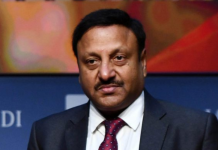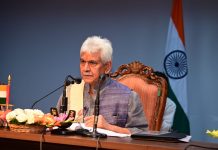
About 90 per cent of the refining cost involves crude oil alone. The spike in crude prices could cause a major headwind for Indian markets and upset the country’s macroeconomic balance in the financial year 2019.
By the time we write this report, crude had risen above $76.45 a barrel to its highest level since November 2014. This could be due to production cuts led by the Organization of the Petroleum Exporting Countries (OPEC), strong demand or the prospect of renewed US sanctions on Iran. But the fact remains that petrol and diesel price rise could be a major headache for the present government led by Prime Minister Narendra Modi as it was for the earlier UPA government headed by Dr Manmohan Singh.
In its latest Monetary Policy Review, the RBI has cautioned about volatile crude oil prices impacting inflation. “International crude oil prices have become volatile in the recent period, with a distinct hardening bias in the second half of March. This has adversely impacted the outlook for crude oil prices,” RBI said adding that there is upside risk to inflation.
It is a historic fact that the present government gained significantly from post 2014 oil windfall, which allowed them to raise excise duty on fuel nine times. Now that oil prices are again surging, the chorus for reducing taxes has grown as clouds of deadly inflation loom large. The present Narendra Modi government has a fiscal deficit target of 3.2 per cent for the fiscal year 2018-19. The government was going gaga over the constant fall in crude oil prices internationally. Little doubt the government did not budget the risks of rising crude oil price in the Budget 2018. Naturally, the rising crude oil price, in itself, is going to have an impact on government’s fiscal deficit. The crude prices have surged 11.92 per cent so far this year. An increase in oil prices is likely to put pressure on fiscal and current account deficits in the year ahead as India imports more than 70 per cent of its oil requirement.
The petroleum and natural gas ministry estimates India’s crude oil import bill may increase by 20 per cent to $105 billion in the 2018-19 financial year from $88 billion in 2017-18.
Historic facts
If we look at the immediate past history we find that in July 2008, when international oil prices had touched an all-time high at $142 per barrel, petrol and diesel were sold in the country at 50.62 per litre and 34.86 per litre, respectively. Currently, the global crude oil prices are comparatively low, at around $76.45 per barrel, but fuel rates are at record levels, the petrol is 76.57 per litre and diesel 67.82 a litre. Even after factoring in the massive subsidies of the UPA regime — about 15 per litre on petrol and 25 per litre on diesel — fuels were relatively cheaper a decade ago.
Retail prices of petrol and diesel have been seeing an increase for the past month, pushing them to record levels despite the international crude price being nowhere near the level it was four years ago. In Delhi, retail petrol and diesel prices were 77.96 a litre and 68.97 a litre respectively. Such sharp increases choke Modinomic or what is the economic growth, stoke inflation reminding people of last days of UPA government, hurt consumers and household budgets. The promised achhe din seem to be paling in the current season’s heat fueled all the more by the fuels on fire. The current spell is inopportune as it comes at a time when there are discernible signs of a recovery in economic growth after disruption induced by demonetisation. The global economy is on a rebound but Indian economy seems to be hit on the wrong side because of oil price hike.
To prevent these fallouts, the immediate solution is for governments at all levels to lower taxes and to bring out the oil prices under the GST regime so that taxes are well defined, uniform and limited. The Centre levies a fixed excise duty on petrol and diesel. It used the window provided by the weakening of crude soon after NDA assumed power to raise duty and the result was oil companies, the PSUs came out of red and became cash rich. Excise duty on unbranded petrol was raised nine times and it is now more than twice the rate which existed when NDA came to power. In the case of unbranded diesel, the duty is more than four times what existed in mid-2014. The outcome of an increase in duty has been a sharp rise in revenue collections from petro products at the cost of consumers or end users. Revenue, which was 88,600 crore in 2013-14, increased to 2,53,254 crore by 2016-17.
Wither oil prices?
For sure, the main cause of the current spell of increase in retail price is the hardening of international crude price which was at their lowest in 2013-14 and suddenly started shooting up in 2017-18. But that should not be an excuse to avoid proactive measures. The Centre must move to significantly slash excise duty. The Modi government should also persuade all states administered by BJP and other parties to lower their fuel taxes which are a percentage of an ever-increasing retail price. There is a strong mechanism in Unitary-Federal relations for doing that. This will make it politically difficult for non-BJP states to hold out. For almost four years, governments have used revenue from fuel taxes to offset the fallout of lacklustre economic growth. This cushion has allowed them to postpone much needed economic reforms.
In the recent past, private consumption expanded at a disappointing pace. Any measure which puts money in the hands of consumers at this moment will push up the growth rate in private consumption. This expansion will help governments garner more tax, not less. A reduction in dependence of fuel taxes will also create an incentive for the GST Council to hasten the pace of reforms, one of which must be to bring petroleum products within GST’s ambit. This incongruous pricing is because of the growing tax burden on petrol and diesel.
Why oil outside GST?
A Delhi-based consumer pays about 47 per cent taxes on petrol and more than 37 per cent on diesel. In most of the other states, these levies are higher. Both, the Centre and states have calculatedly kept petroleum products outside the GST purview because they are cash cows. Local levies on fuels vary from state to state. A permanent solution to this problem, however, lies in the inclusion of auto fuels under the GST. This move will uniformly cap taxes on petrol and diesel at a maximum of 28 per cent. This is not impossible considering the BJP is in power in 20 states while other non-BJP ruled states would be forced to follow suit in view of forthcoming general elections.
It is a fact that a steep decline in the international oil prices after the BJP came to power made it sanguine. As a result, it was caught unprepared ahead of the Karnataka Assembly elections. Little doubt that immediately after the Karnataka results, the oil companies affected a price hike hurting the people. Under a tacit directive, state-run oil retailers froze the daily hike of petrol and diesel prices for almost three weeks, only to recover their losses with a vengeance. Instead of mopping benefits of low oil prices to achieve fiscal deficit targets, the government should have created a price stabilization fund to shield consumers from the highly volatile international oil market. Another vital reform this sector requires is an explicable pricing mechanism. The government has announced that it was looking at a permanent and lasting solution but at a time when Modi Government completes its four years on May 26, 2018, people became all the more restive as no steps to contain petrol and diesel prices have so far been announced.
For the record, the Petroleum Minister Dharmendra Pradhan had earlier said that the government will intervene to reduce prices.

Common man left out
Post Karnataka elections, the clamour grows for a cut in central excise duty to bring down skyrocketing petrol and diesel prices has grown across the country. It may not be forgotten that oil marketing companies (OMCs) seem to have got the most bang for their buck ever since the Modi government came to power. While the rise in fortune for the OMCs in the past four years was mainly on account of lower crude oil prices. The common man was left out from the party as the government had hiked tax levies on fuel on several occasions. Despite the astounding profits that OMCs have made in the last few years, fuel prices for consumers have gone from bad to worse. Excise duty on petrol was hiked by 11.77 per litre and that on diesel by 13.47 a litre ever since Prime Minister Narendra Modi-led BJP government came to power in 2014. After moving to the daily revision of fuel prices in June last year, the government had cut basic excise duty on petrol and diesel by 2 per litre in October last year.
History of PSUs
A peep into the profits of these downstream companies gives an idea as to how their financials have improved. This year fiscal 2017-18, the Indian Oil Corp, country’s largest fuel retailing giant, reported 40 per cent jump in the March quarter net profit on the back of higher refining margin and inventory gains. Its net profit rose to 5,218 crore in the January-March period compared with 3,720.62 crore in the same quarter of the preceding fiscal year. The HPCL, another state-owned OMC, recorded a drop of 4 per cent in its March quarter profit, the overall FY18 net profit was highest ever for the company at 6,357 crore. The profits for the financial year 2017-18 have more than double from what HPCL made in 2014-15, the same year when PM Narendra Modi became the Prime Minister.
For Indian Oil Corporation, India’s largest company by revenue, the windfall is even more staggering. The IOC’s profits have jumped more than four times since the financial year 2015. During 2017-18, IOC’s net profit was at an all-time high of 21,346 crore on a turnover of 5.06 lakh crore. Though the government-owned Bharat Petroleum Corporation Limited or BPCL is yet to announce its quarterly earnings, its profit after tax had shot up to 8039 crore in 2016-17 from 5085 crore in 2014-15. Perhaps a part of this bonanza could be due to the new refineries which are way more efficient. Also, with rising consumption of fuel, the volumes or the overall refining capacity of OMCs have gone up. To meet the rising demand, the IOC alone is planning to invest 70,000 crore to raise its oil refining capacity by about a quarter by 2030.
Future is bleak
However, the current situation appears bleak for oil producing firms. With global crude oil prices hovering around $80 a barrel this year, state-run upstream companies like ONGC and Oil India Ltd (OIL) are fearing a possible return of under-recovery sharing system as the Modi government looks for ways to placate fuming middle class ahead of 2019 Lok Sabha elections. Petrol and diesel prices continue to soar and touched another peak when petrol was hiked by 36 paise to 85.65 per litre in Mumbai. This was the 12th straight hike in a row. Diesel prices, on the other hand, were hiked by 24 paise to 73.20 per litre in Mumbai. Petrol prices in Delhi were increased by 36 paise to 77.83 per litre and diesel by 22 paise to 68.75 per litre. Petrol prices have risen by 11.02 while diesel has risen by 7.27 in the past 12 days in Mumbai. As for Brent crude futures, the international benchmark for oil prices traded at $78.76 a barrel on the ICE.

The way out
According to Moody’s Investors Service, ONGC and OIL could be asked to bear a part of government’s fuel subsidy for oil, if prices stay above $60 per barrel for the fiscal year ending March 2019. The credit rating agency added that the government is unlikely to reverse fuel pricing deregulation because of its commitment to reforms.
“States have the capacity and must reduce the duty on petrol, while the Centre should create fiscal space to deal with the impact of spurt in oil prices, There is merit in reducing the duties but both by the states and the Centre. More so for the states as they tax the oil on ad valorem basis … So states can take that cut much more and better than the Union government,” according to NITI Aayog vice-chairman Rajiv Kumar.
He further said that it is important for them (states) to agree 10-15 per cent duty cut and take home the same amount of tax revenue as budgeted. “Not doing that means being exceptionally greedy at the cost of not just the people but also the economy,” Kumar added.
The states, he said, on an average tax petrol at 27 per cent. As regards the Centre, the NITI Aayog vice chairman said they have the fiscal space and need to create more to deal with the problem of rising oil prices. “The centre has fiscal space and it can create more fiscal space on the non-tax revenue side. Because last year we did very well. We exceeded the Budget target. Maybe this year also we can do that,” Kumar said.
He also said the centre could consider reducing the additional excise duty on petrol. It should not temper with infrastructure cess which is being directly used for developmental activities, Kumar added. He also opined that not only petrol but electricity should also be brought under the goods and services tax (GST).
Petrol and diesel prices were raised for the 11th day in succession today as the state-owned oil firms gradually passed on to the consumer the increased cost of international oil that had accumulated since a 19-day freeze was imposed just before Karnataka elections.
The government raised excise duty nine times between November 2014 and January 2016 to shore up finances as global oil prices fell, but then cut the tax just once in October last year by 2 a litre. The Centre levies 19.48 as excise duty on a litre of petrol.
letters@tehelka.com













